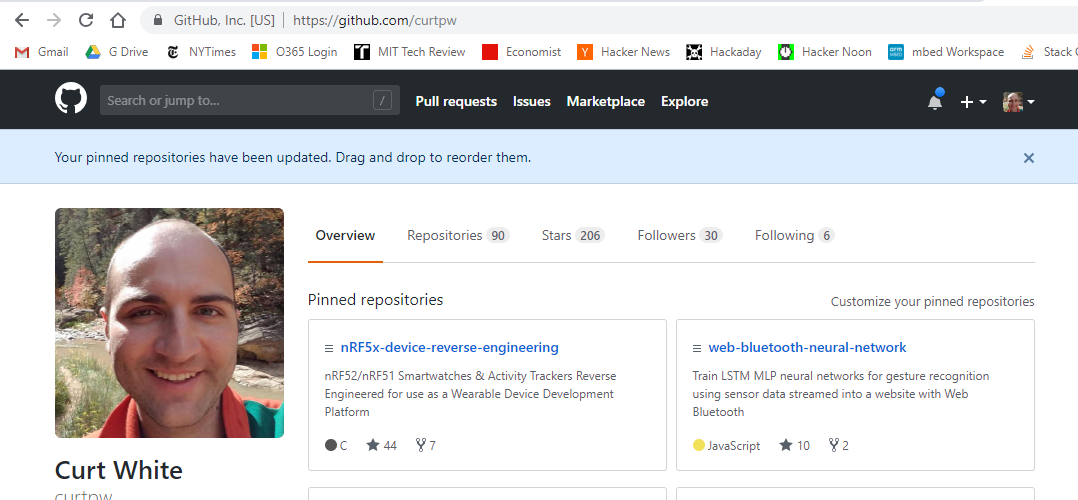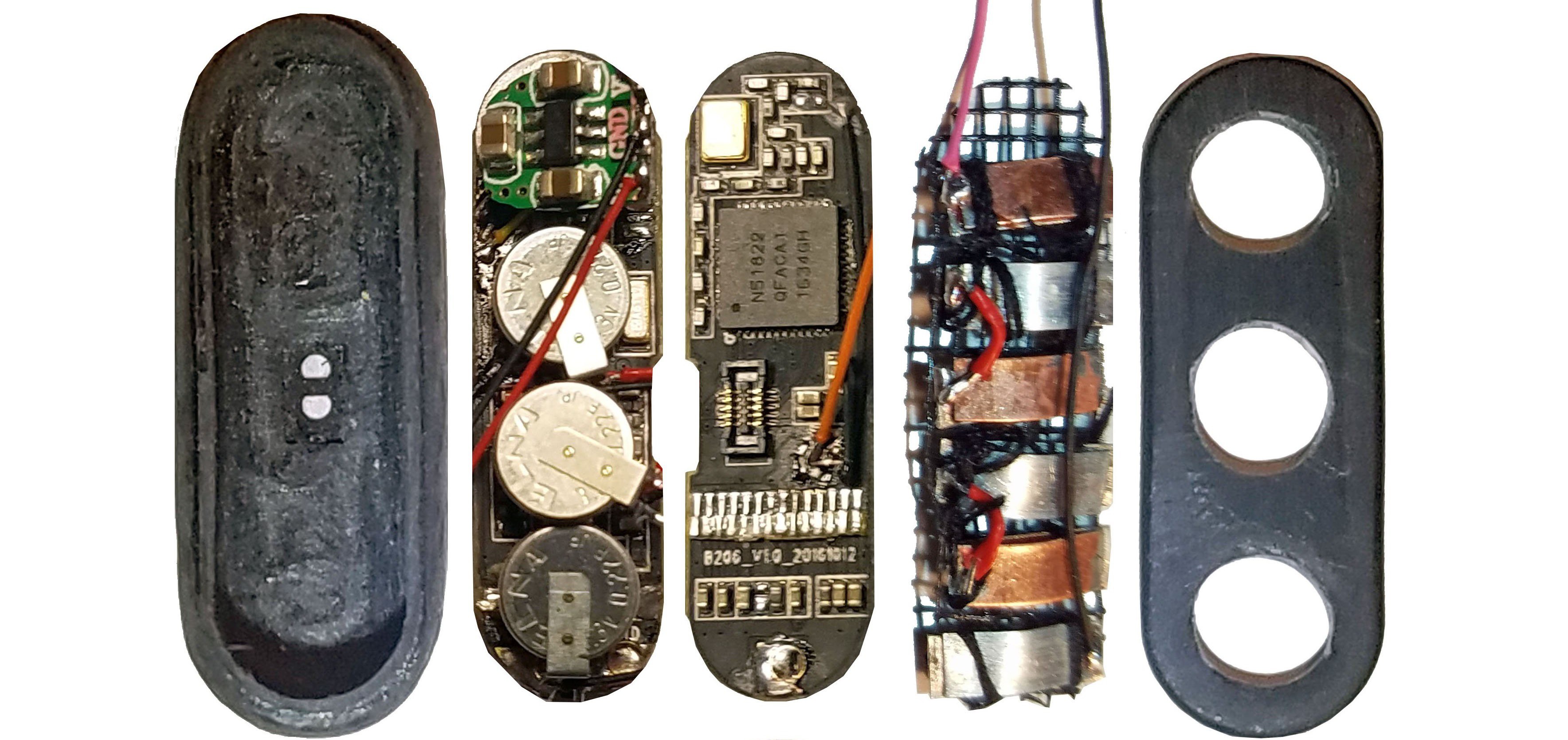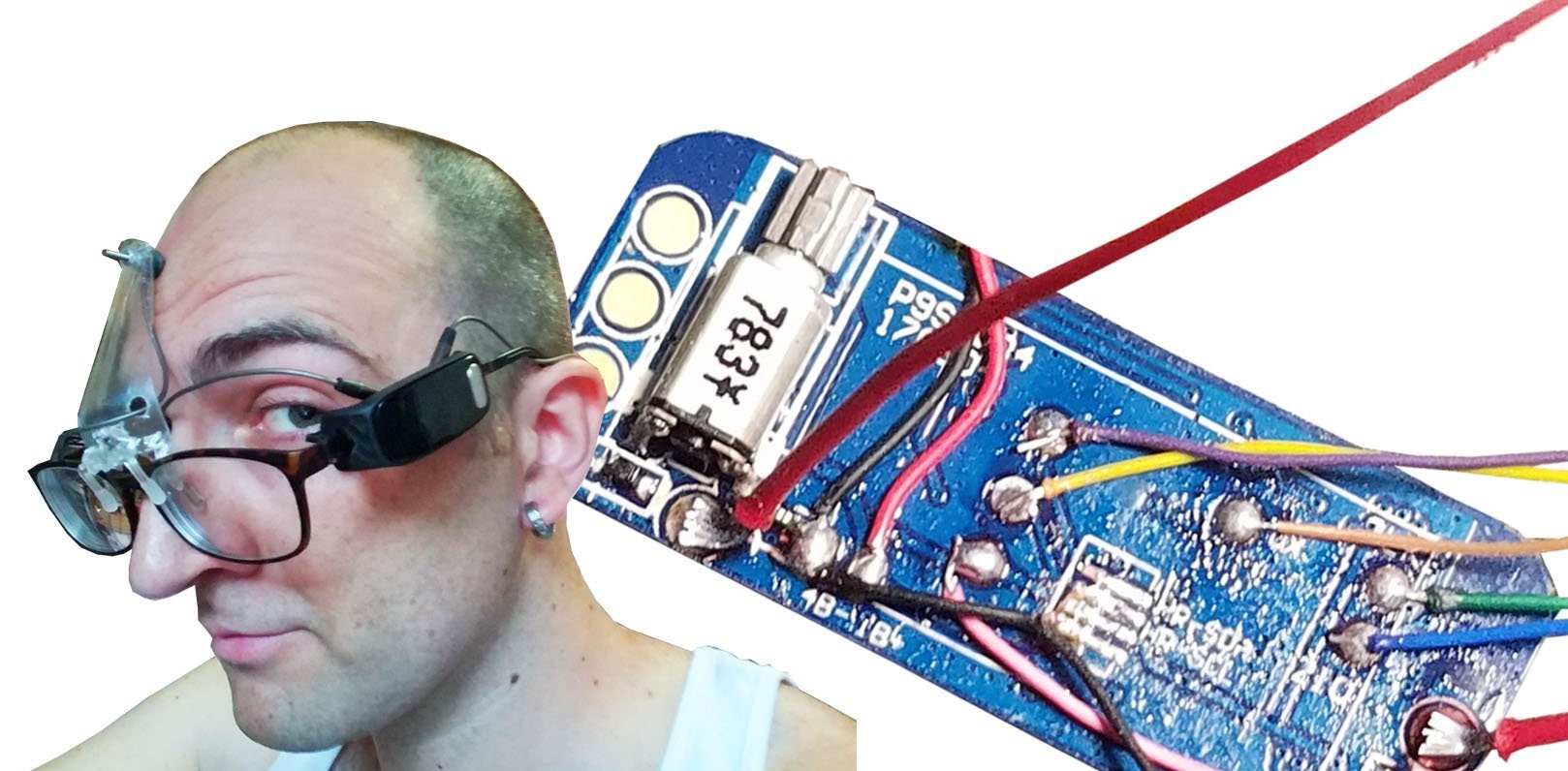Open Source
When I think open hardware I think Arduino and Raspberry Pi. When I think open software I think Linux, Python, JavaScript and countless libraries/modules thereof. These are tools and more importantly, community driven platforms. I use hacked fitness trackers to prototype wearable devices because nothing else works - nothing else is small, inexpensive and polished enough. They have become my go-to wearable device prototyping platform for both work and personal projects. This platform has the potential to be a successful community driven open source project - and the Hackaday Prize competition is where I decided to launch it.
I have had a lot of help along the way. Especially members of the smartwatch hacking slack group! Hackaday is a good place to document projects, but GitHub is necessary for a full fledged open source project with multiple contributors. The primary GitHub repository for the "Hacking Wearables for Mental Health and More" Hackaday project is becoming exactly that. I have spent so much time building projects for Hackaday (I decided to build a significant project for each of the 5 challenges!) that I've been a little neglectful of the GitHub repository over the last couple months, but things will get humming again in no time.

44 stars and 7 forks is a great start. More of a "fledgling" open source project than a "full fledged" open source project but it is definitely legit, especially considering how niche it is. Personal first. The repositories for various tutorial examples and demonstration projects have gotten some GitHub love as well.
Platform Demonstration Projects
I created three demonstration sub-projects specifically to showcase hacked fitness trackers as a wearable device platform and entered them into the Hackaday Prize: Intraoral Respiration Monitor and Overdose Detector, Stomach Acid Powered Smartpill and EEG Headset. Two of those ended up as finalists despite being created as tutorials for this project. My hope is that the positive reaction these projects have garnered will add additional momentum to making the hacked fitness tracker prototyping platform a successful open source project.
Stomach Acid Powered Smartpill

Heard of using lemons, potatoes or salt water to create a simple battery? Stomach acid (dilute hydrochloric acid) can be used in the exact same way and is significantly more powerful. I use an array of zinc (anode) and copper strips (cathode) immersed in stomach acid (electrolyte) to turn my stomach into a galvanic cell battery. The stomach battery powers a hacked activity tracker small enough to swallow and reconfigured as a body monitoring 'smart pill'. The user's stomach is the smart pill's battery. By incorporating a $25 hacked activity tracker into existing research I am trying to make stomach acid powered smart pills inexpensive and open source. [LINK TO PROJECT]
(Down camera feed is on an off frame screen so use your imagination when I refer to closeups of the smartpill)
Intraoral Respiration Monitor and Overdose Detector

A wireless full waveform respiration monitor worn entirely inside user's mouths (intra-oral) that streams data to a Web Bluetooth enabled web application.
The device measures the air pressure, humidity and skin temperature inside the user's airway. In short, BME280 air pressure sensor + MLX90615 thermopile thermometer + hacked miniature nRF51822 based activity tracker mounted on an ultra-thin custom dental retainer.
My primary goal is to detect opiate overdose. Depressed respiration is the best way to detect overdose and the only approved indicator for the administration of Narcan (Naloxone). Full waveform respiration data is surprisingly difficult to obtain. Spirometers, chest-straps and pulse oximetry (including photoplethysmogram) are relatively inaccurate - particularly when respiration becomes depressed. There are many potential applications and the device could be built using other form factors (bite stick, mouth guard, integration into tracheal intubation. [LINK TO PROJECT]
EEG Headset

The B20 Fitness Tracker contains an ADS1292 bioimpedance sensor which can be used for simple ECG, EMG and EEG sensing. It also contains a nRF52832 ARM Cortex M4 processor which can easily be programmed with Arduino. With Bluetooth, OLED display, accelerometer, optical HR sensor and vibration motor - all for $35 in a miniaturized form factor - it is a pretty extraordinary prototyping platform for simple ECG/EMG/EEG projects.
A few months ago I ran a workshop on hacking the Neurosky/Mattel Mindflex EEG headset. Despite being a super famous hack, the core "concentration" detection feature is still a black box after all these years! I decided to replicate this functionality with the B20. I built some EEG glasses and a Web Bluetooth application which can visualize data from the device and train exportable standalone neural networks for detecting brain states Mindflex style and general human-computer interfacing. [LINK TO PROJECT]
 Curt White
Curt White
Discussions
Become a Hackaday.io Member
Create an account to leave a comment. Already have an account? Log In.